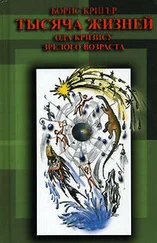123. G. Douaud et al., “Preventing Alzheimer’s Disease-Related Gray Matter Atrophy by B-Vitamin Treatment,” Proceedings of the National Academy of Sciences 110, no. 23 (June 2013): 9523-28.
124. http://www.sciencedaily.com/releases/2013/ll/131104142343.htm.
125. J. Dysken et al., “Effect of Vitamin E and Memantine on Functional Decline in Alzheimer Diseas e" JAMA 311, no. 1 (Jan. 2014): 33-44.
126. J. Sanmukhani et al.. “Efficacy and Safety of Curcumin in Major Depressive Disorder: A Randomized Controlled Trial,” Phytotherapy Research 28, no. 4 (Apr. 2014): 579-85.
127. T. Crook et al., “Effects of Phosphatidylserine in Alzheimer’s disease,” Pharmacology Bulletin 28, no. 1 (1992): 61-66.
128. http://www.greenmedinfo.com/article/alpha-lipoic-acid-anti-inflammatory-andneuroprotective-treatment-alzheimers.
129. J. Douillard, The 3-Season Diet (New York: Harmony Books, 2001).
130. M. Levine et al., “Low Protein Intake Is Associated with a Major Reduction in IGF-1, Cancer, and Overall Mortality in the 65 and Younger but Not Older Population,” Cell Metabolism 19. no. 3 (2014): 407-17, doi:10.1016/j. cmet.2014.02.006.
131. http://www.ewg.orgfoodnews/summary.php.
132. http://www.edf.org/sites/default/files/1980pocket seafood selector.pdf.
133. S. Weyerer et al., “Current Alcohol Consumption and Its Relationship to Incident Dementia: Results from a 3-Year Follow-Up Study among Primary Care Attenders Aged 75 Years and Older,” Age Ageing 40 (2011): 456-63.
134. S. Sabia et al. “Alcohol Consumption and Cognitive Decline in Early Old Age,” Neurology 82 (2014): 332-39.
7. Любознательность — залог молодости мозга: шаг четвертый
135. J. Rodrigue et al., “Induced Mood and Curiosity,” Cognitive Therapy and Research 11, no. 1 (1987): 101-6.
136. J. Litman and T. Jimerson, “The Measurement of Curiosity as a Feeling of Deprivation,” Journal of Personality 82, no. 2 (2004): 147-57.
137. J.E. Joseph, X. Liu, Y. Jiang, D. Lynam, and T.H. Kelly, “Neural Correlates of Emotional Reactivity in Sensation Seeking,” Psychological Science 20, no. 2 (2008): 215-23.
138. M. Kang et al., “The Hunger for Knowledge: Neural Correlates of Curiosity” (manuscript), Division of Humanities and Social Sciences, California Institute of Technology.
139. T.B. Kashdan and M.F. Steger, “Curiosity and Pathways to Well-Being and Meaning in Life: Traits, States, and Everyday Behaviors,” Motivation and Emotion 31, no. 3 (2007), 159-73.
140. T.B. Kashdan and P.J. Silvia (2009), “Curiosity and Interest: The Benefits of Thriving on Novelty and Challenge,” in S.J. Lopez, ed., Handbook of Positive Psychology, 2nd ed. (New York: Oxford University Press).
141. D.C. Park and I. McDonough, “The Dynamic Aging Mind: Revelations from Functional Neuroimaging Research," Perspectives in Psychological Science 8 (2013): 62-67.
142. L. Shlain, Art & Physics: Parallel Visions in Space, Time and Light (New York: Harper Perennial, 1991).
143. Shlain, ibid., p. 16.
144. L. Carroll, Alice’s Adventures In Wonderland, chap. 1, “Down the Rabbit Hole” (New York: Bantam Dell, 1981; first published 1865).
145. W. Pisula et al., “Comparative Psychology as Unified Psychology: The Case of Curiosity and Other Novelty-Related Behavior,” Review of General Psychology 17. no. 2 (2013): 224-29.
146. J. Litman, “Curiosity and the Pleasures of Learning: Wanting and Liking New Information," Cognition and Emotion 19, no. 6 (2005): 793-814.
147. A. Gosline, “Bored to death: Chronically Bored People Exhibit Higher Risk-Taking Behavior,” Scientific American, Feb. 26,2007, www.sciam.com/article. cfm?id=bored — find-something-to-live-for.
148. C. Yamal and X. Qian, “Older-Adult Playfulness: An Innovative Construct and Measurement for Healthy Aging Research,” American Journal of Play 4, no. 1 (2011): 52-79.
149. Robert Frost, “The Road Not Taken” (poem). Mountain Interval (New York: Henry Holt, 1915).
8. Молодость мозга и гибкий ум: шаг пятый
150. Е. Goldberg, The Wisdom Paradox (New York: Gotham Books, 2005).
151. C. Herzog et al., “Enrichment Effects on Adult Cognitive Development,” Psychological Science in the Public Interest 9, no. 1 (2008): 1-65.
152. B. Chanowitz and E. Langer, “Premature Cognitive Commitment.” Journal of Personality and Social Psychology 41, no. 6 (1981): 51-63.
153. E. Langer, Mindfulness (New York: Da Capo Press, 1989).
154. C. Coppens et al. (2010). “Coping Styles and Behavioural Flexibility: Towards Underlying Mechanisms,” Philosophical Transactions of the Royal Society 365, no. 1560 (2015): 4021-28.
155. C. Coppens et al. (2010). “Coping Styles and Behavioural Flexibility: Towards Underlying Mechanisms,” Philosophical Transactions of the Royal Society 365, no. 1560 (2015): 4021-28.
156. D. Kahneman, Thinking, Fast and Slow (New York: Farrar, Straus and Giroux,
2011 ).
157. J. Hawley, The Bhagavad Gita: A Walkthroughfor Westerners (San Francisco: New World Library, 2001).
158. M. Merzenich, Soft-Wired, 2nd ed. (San Francisco: Parnassus Publishing, 2013).
159. D. Durstewitz et al. “Abrupt Transitions between Prefrontal Neural Ensemble States Accompany Behavioral Transitions during Rule Learning,” Neuron 66 (2010): 438-48.
160. S. Floresco, “Prefrontal Dopamine and Behavioral Flexibility,” Frontiers in Neuroscience 7, no. 62 (2013).
161. G. Buzsaki, Rhythms of the Brain (New York: Oxford University Press, 2006).
162. K. Druck, The Real Rules of Life: Balancing Life’s Terms with Your Own (New York: Hay House Publishing, 2012), p. vxi.
163. D. Zabelina and M. Beeman, “Short-Term Attentional Perseveration Associated with Real-Life Creative Achievement," Frontiers in Psychology 4 (2013): 191.
164. Там же.
165. A.S. Griffin, D. Guez, F. Lermite, and M. Patience, “Tracking Changing Environments: Innovators Are Fast, but Not Flexible Learners,” PLoS ONE8, no. 12 (2013): Є84907, doil0.1371/journal.pone.0084907.
166. P. Greenwood, Nurturing the Older Brain and Mind (Cambridge, MA: MIT Press,
2012 ).
167. J. Singer, Memories that Matter (Oakland, CA: New Harbinger Publications, 2005).
9. Молодость мозга и оптимизм: шаг шестой
168. D. Hecht, “The Neural Basis of Optimism and Pessimism.” Experimental Neurobiology 22, no. 3 (2013): 173-99.
169. A. Reading, Hope and Despair: How Perceptions of the Future Shape Human Behavior (Baltimore: The Johns Hopkins University Press, 2004), 3.
170. L. Abramson, M. Seligman, and J. Teasdale, “Learned Helplessness in Humans: Critique and Reformulation,” Journal of Abnormal Psychology 87, no. 1 (1978): 49-74.
171. T. Sharot et al., “Dopamine Enhances Expectation of Pleasure in Humans," Current Biology (2009), doi:10.1016/j.cub.2009.10.025.
172. T. Sharot, C. Korn, and R.J. Dolan, “How Unrealistic Optimism Is Maintained in the Face of Reality," Nature Neuroscience 14 (2011): 1475-79.
173. C. Moutsiana, N. Garrett, R.C. Clarke, R.B. Lotto, S.J. Blakemore, and T. Sharot, “Human Development of the Ability to Learn from Bad News, Proceedings of the National Academy of Sciences 110, no. 41 (2013): 16396-401.
Читать дальше
Конец ознакомительного отрывка
Купить книгу










